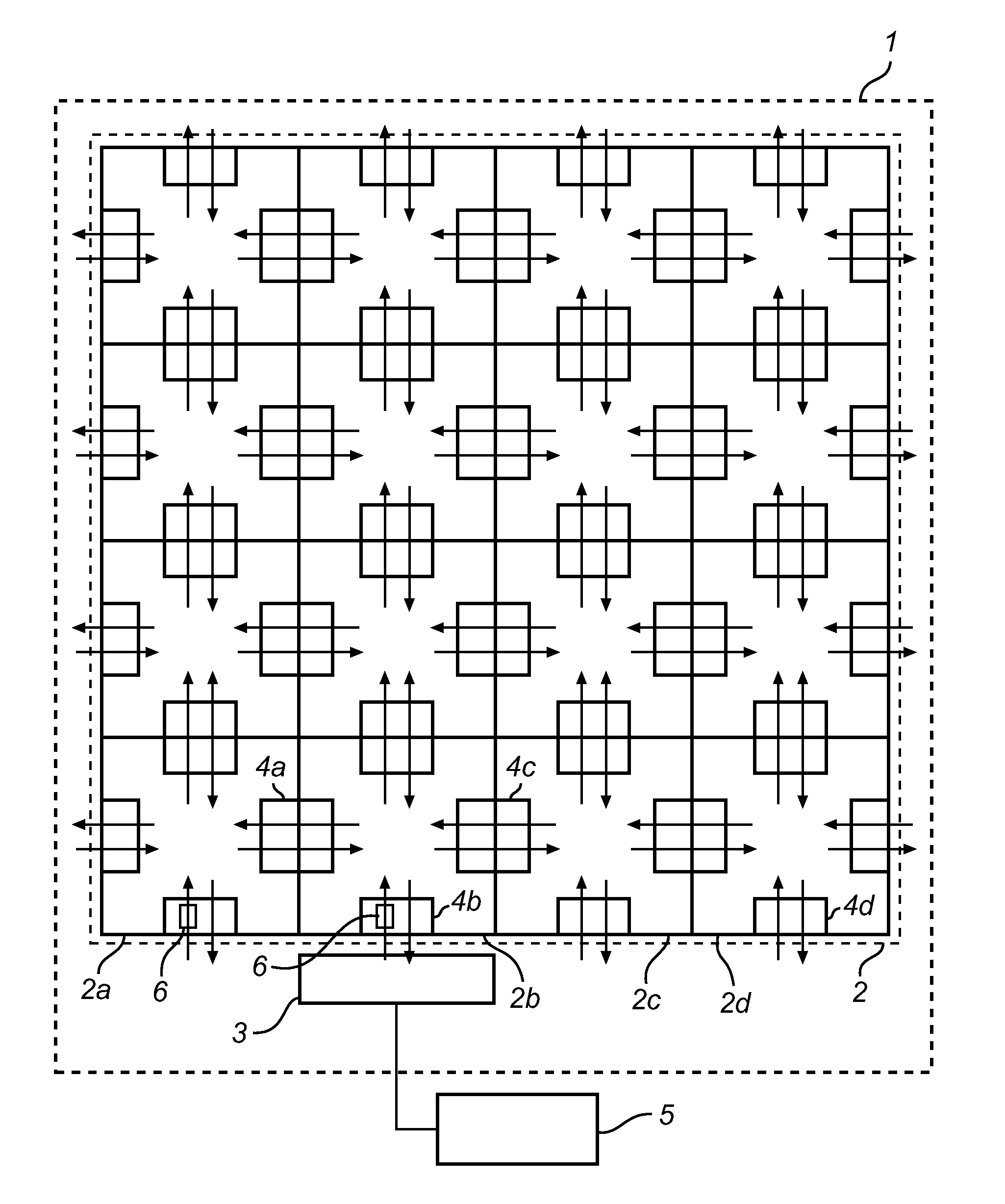Method for data path creation in a modular lighting system
a data path and modular lighting technology, applied in the field of modular lighting, can solve the problems of defunct or inefficient already established data paths, inability to meet the needs of external controllers, and inability to know the geometric shape and/or size of the modular lighting system in general, so as to reduce power consumption
- Summary
- Abstract
- Description
- Claims
- Application Information
AI Technical Summary
Benefits of technology
Problems solved by technology
Method used
Image
Examples
Embodiment Construction
[0053]The present invention will now be described more fully hereinafter with reference to the accompanying drawings, in which exemplifying embodiments of the invention are shown. This invention may, however, be embodied in many different forms and should not be construed as limited to the embodiments set forth herein; rather, these embodiments are provided by way of example so that this disclosure will be thorough and complete, and will fully convey the scope of the invention to those skilled in the art. Furthermore, like numbers refer to like or similar elements throughout.
[0054]Referring to FIG. 1, there is shown a schematic view of a modular lighting system 1 according to an exemplifying embodiment of the present invention, comprising a plurality 2 of lighting modules 2a, 2b, 2c, 2d, . . . and a control device 3. Each of the lighting modules 2a, 2b, 2c, 2d, . . . (of which only a few are indicated by reference numerals in FIG. 1) may comprise a plurality of communication units 4...
PUM
 Login to View More
Login to View More Abstract
Description
Claims
Application Information
 Login to View More
Login to View More - R&D
- Intellectual Property
- Life Sciences
- Materials
- Tech Scout
- Unparalleled Data Quality
- Higher Quality Content
- 60% Fewer Hallucinations
Browse by: Latest US Patents, China's latest patents, Technical Efficacy Thesaurus, Application Domain, Technology Topic, Popular Technical Reports.
© 2025 PatSnap. All rights reserved.Legal|Privacy policy|Modern Slavery Act Transparency Statement|Sitemap|About US| Contact US: help@patsnap.com



